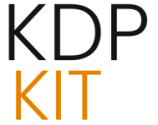Kindle Direct Publishing 2025: Can You Make Money Publishing Your Books?

As of October 20, 2025, the Kindle Direct Publishing (KDP) ecosystem continues to be a powerful, yet highly competitive, avenue for authors seeking to generate income from their writing. The democratization of publishing that KDP pioneered now demands a sophisticated, business-minded approach. The question is no longer if you can make money, but rather how you must adapt your strategy to thrive in the mature, algorithm-driven landscape of 2025. Success hinges on strategic content creation, diligent backlist building, aggressive marketing, and technical excellence.
Strategic Content Creation: What Sells and What Doesn’t
Analyzing the market performance in Two Thousand Twenty-Five reveals clear patterns in genre and approach that separate casual hobbyists from sustainable earners.
Dominance of Non-Fiction Versus Serialized Fiction
A distinct genre split influences market performance. Broadly, non-fiction titles maintain consistent sales, especially when they address a pressing need with genuine author expertise, with Personal Development, Health & Wellness, and specialized Business topics remaining high-demand categories. However, for fiction writers aiming for substantial income, the genre is secondary to the structure of the output. The market strongly favors authors who cultivate engrossing fiction series that compel readers to purchase installment after installment. A single, standalone novel faces a significant visibility challenge compared to an established series where reader loyalty drives demand for the next entry.
Deep Niche Targeting Over Broad Appeal
The era of successfully publishing generic content—such as a broad self-help book or a mass-market thriller without series structure—is largely over due to intense competitive pressure. Current success pivots on micro-niche targeting. This involves moving beyond widely popular categories to identify highly specific, underserved segments. For instance, instead of a generic “Coloring Book,” a successful title might be a “Mindfulness Coloring Book for Night Shift Nurses” or a “Puzzle Book Based on Victorian Etiquette”. Creating content specifically for an identified customer avatar ensures that marketing efforts are more precise and that the product directly addresses a defined reader desire, effectively cutting through the noise generated by less focused competitors. Low-content diversification into areas like niche activity books or specialized workbooks also remains a viable supplementary stream.
Building and Maintaining a Competitive Digital Backlist
The most reliable income streams in 2025 are not reliant on a single breakout hit but on the aggregate sales generated by a strategic catalog.
The “Five Book Minimum” for Substantial Earnings
A recurring theme among established self-publishers is the critical mass required to transition KDP from a supplemental stream to a reliable income foundation. Experts suggest aiming for at least five distinct books on the platform before expecting significant financial impact. This backlist functions as a portfolio; aggregate sales from multiple titles provide dependable monthly returns, and established titles benefit from organic ranking visibility based on longevity and accumulated reader data. One author successfully generating high five-figure monthly income does so with a catalog of over eleven novels and novellas, underscoring the value of volume combined with quality.
The Strategy of Rapid Successive Releases
To build that necessary backlist effectively, the contemporary strategy often involves maintaining a cadence of consistent, high-quality releases. While the term “rapid” is relative, authors must publish multiple books annually to capitalize on breakthrough successes and maintain momentum with Amazon’s algorithm. The goal is to create a positive feedback loop where each new publication lifts the profile of the older ones. Furthermore, a steady output signals activity to Amazon’s performance-based algorithm, which positively influences the visibility of the entire catalog. Successful launches are often supported by a “90-day relaunch” strategy, involving periodic promotions to maintain sales velocity and keep the book relevant in the rankings.
The Non-Negotiable Imperative: Marketing and Visibility in 2025
The digital marketplace of 2025 does not inherently reward quality alone; it rewards visibility.
The Failure of the “Publish and Wait” Approach
Perhaps the most critical lesson emphasized in Two Thousand Twenty-Five coverage is the absolute futility of the “publish and wait” mentality. Simply uploading a well-written manuscript is insufficient. Authors must actively dedicate time, resources, and strategy to promotion. For anyone aiming for meaningful revenue, marketing must consume as much energy as the writing itself, or the book will be lost in the sheer volume of titles available. Amazon’s algorithm prioritizes books with consistent sales, positive reviews, and reader engagement.
Essential External Promotion Channels
Effective marketing requires a multi-pronged external approach that goes beyond the tools Amazon provides. Building and nurturing a direct line of communication with the most engaged readers remains paramount. While specific tactics shift, establishing an email list is crucial for bypassing algorithm changes entirely. Beyond this, leveraging social media platforms, particularly those focused on short-form video content like TikTok and Instagram Reels, is essential for introducing books to new audiences. Furthermore, authors proactively seek opportunities to write related content for external blogs or sites, ensuring a direct link back to the Kindle listing is included to drive initial traffic needed to gain organic ranking momentum on Amazon itself.
Technical Excellence and Platform Integration
Even the most compelling narrative will fail if the presentation suggests amateur status in the discerning 2025 marketplace.
The Critical Nature of Professional Editing and Presentation
Basic technical flaws can quickly torpedo sales momentum via negative reviews. Professional editing is a non-negotiable investment to shield the author from errors that halt sales velocity. Complementing this, presentation matters immensely. A book must look like a “conventional book” inside, with clear and properly formatted chapter headings. While design tools can assist, paying a designer for an eye-catching cover is often cited as a superior investment, as cluttered images and outdated fonts no longer cut it; bold, clean, and polished designs are required to stand out in the thumbnail view.
Diversifying Distribution Beyond Amazon’s Ecosystem
While Amazon’s marketplace remains dominant, relying solely on its ecosystem carries risks, particularly concerning the exclusivity often required for Kindle Unlimited enrollment. Savvy authors in Two Thousand Twenty-Five are increasingly adopting a “going wide” strategy for their digital formats. This involves using aggregators like Draft2Digital to distribute to major retailers such as Kobo and Apple Books. This diversification protects against platform dependency and caters to the growing segment of consumers who actively choose to support retailers outside of Amazon. KDP’s non-exclusive agreement permits this expansion, ensuring authors maintain full rights to their work.
Pricing Psychology and Royalty Optimization
Pricing is a delicate lever that directly impacts both reader conversion and the author’s take-home percentage.
Finding the Sweet Spot: Pricing for Maximum Royalty Thresholds
For eBooks, pricing between Two Dollars and Ninety-Nine Cents and Nine Dollars and Ninety-Nine Cents is recommended to secure the highest available royalty tier, typically seventy percent in the United States marketplace, provided the title qualifies. Authors must continually calculate expected returns, as minor price shifts can push a book over a threshold, potentially resulting in a higher average royalty per sale despite potentially lower unit volume. Series pricing also remains a potent tactic: pricing the first book competitively low to hook readers, and then pricing subsequent installments higher.
Leveraging Platform Promotions and Discount Windows
Authors must not overlook the built-in marketing mechanisms provided by KDP. Utilizing promotional tools such as temporary price reductions or Kindle Countdown Deals injects short-term spikes in sales volume. These promotions serve a dual purpose: they attract price-sensitive readers, and the resulting surge in sales rank temporarily improves organic visibility across the platform for weeks afterward. Furthermore, generating favorable reviews is often easier when readers have sampled the work at a reduced cost.
The Long-Term Authorial Mindset and Persistence
Treating KDP as a Scalable Business Venture
The overarching takeaway for anyone serious about generating meaningful income in Two Thousand Twenty-Five is that Kindle Direct Publishing must be approached as a business, not a spontaneous side hustle. This demands commitment to tasks outside of pure writing: market research, advertising budget management, sales report data analysis, and continuous skill development in areas like digital marketing. Those who treat it casually—uploading a few low-effort books and abandoning the project after minimal initial returns—are the ones most likely to quit and be disappointed.
Cultivating Resilience Against Early Setbacks
The path to profitability is seldom linear. Historical examples of successful authors underscore the necessity of resilience in the face of slow initial growth; many who now achieve significant five-figure monthly incomes reported earning very little for a year or more to reach initial milestones. In the current competitive climate, a lack of immediate sales is a signal to refine marketing, pivot niche selection, or simply release the next high-quality installment, rather than interpreting it as a final verdict on the book’s potential. The ability to keep writing, refining, and re-engaging with the market is what ultimately separates the sustained earners from the casual experimenters in the 2025 self-publishing ecosystem.








